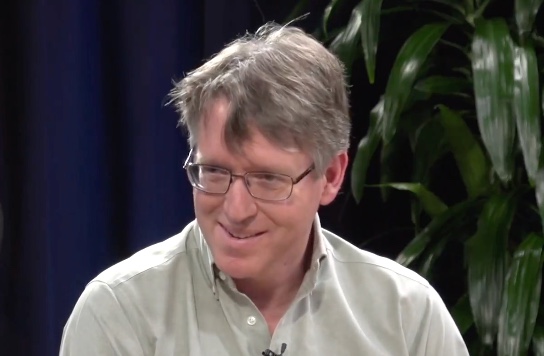 NEWS
NEWS
 NEWS
NEWS
 NEWS
NEWS
The pace of digital development grows exponentially, giving both developers and businesses constant opportunities for innovation. But while tech’s growth pace is a boon for industries at large, it also provides significant challenges for those working to keep up.
“It used to be that engineering was so expensive and time-consuming, you’d have to design it upfront and make one version of it and be done. That’s changed now that engineering has gotten easier,” said Bruce Arthur (pictured), vice president of engineering at Banter.ai and former engineer at Apple Inc.
The tech that enables this accelerated process has clear benefits for business, but its drawbacks lie in the risk of a rushed product that lacks utility or security.
With his years of experience working in this ever-changing industry, Arthur shed some light on the issues organizations face — and the best practices they can implement to solve them — when he paid a visit to theCUBE, SiliconANGLE Media’s mobile livestreaming studio, and spoke with host John Furrier (@furrier) at SiliconANGLE’s Palo Alto studio in California.
The renaissance of software development has created a far more interactive creation process with its tendency toward public iterations. This gives developers the opportunity to make higher-quality software with the data and feedback they receive, but also creates the potential for the release of a product that hasn’t spent enough time in development.
On how to maintain quality in such a fast-paced environment, Arthur has a simple solution. “You really need to leave time to schedule it. It needs to be on your list,” he said.
Growth in the “internet of things” poses another potential for risk, with unregulated sensors on smart products that could prove weak against hacking. While an exciting opportunity, internet of things must be optimized for safety with differentiated software and limited sensor access that ensures privacy. “At a technical level, we need to make operating systems and tools and networking protocols that aren’t general purpose, because general purpose tools are hackable,” Arthur said.
As tech becomes more prominent in industries that are not traditionally sustained by tech innovation, it’s important for the next generation of industry newcomers to remain vigilant in their responsibility to society when implementing new solutions. Where individual impact was once limited, now developers can solve large-scale problems in a variety of industries — and solve some of the problems created by tech as well.
“Technology does have a bit of a responsibility to fix some of the [things] it broke,” Arthur said, referring to issues of job displacement and “fake news” that have arisen in part through tech.
Despite the balancing act it requires of enterprises and individuals, Arthur is excited to see what the tech industry will uncover in the future. “We now have enough computing resources … that we can actually go back and tackle some harder computer science problems. There are things that used to be so big. … Those are problems now that are becoming very tractable,” he concluded.
Watch the complete video interview below, and be sure to check out more of SiliconANGLE’s and theCUBE’s coverage.
THANK YOU